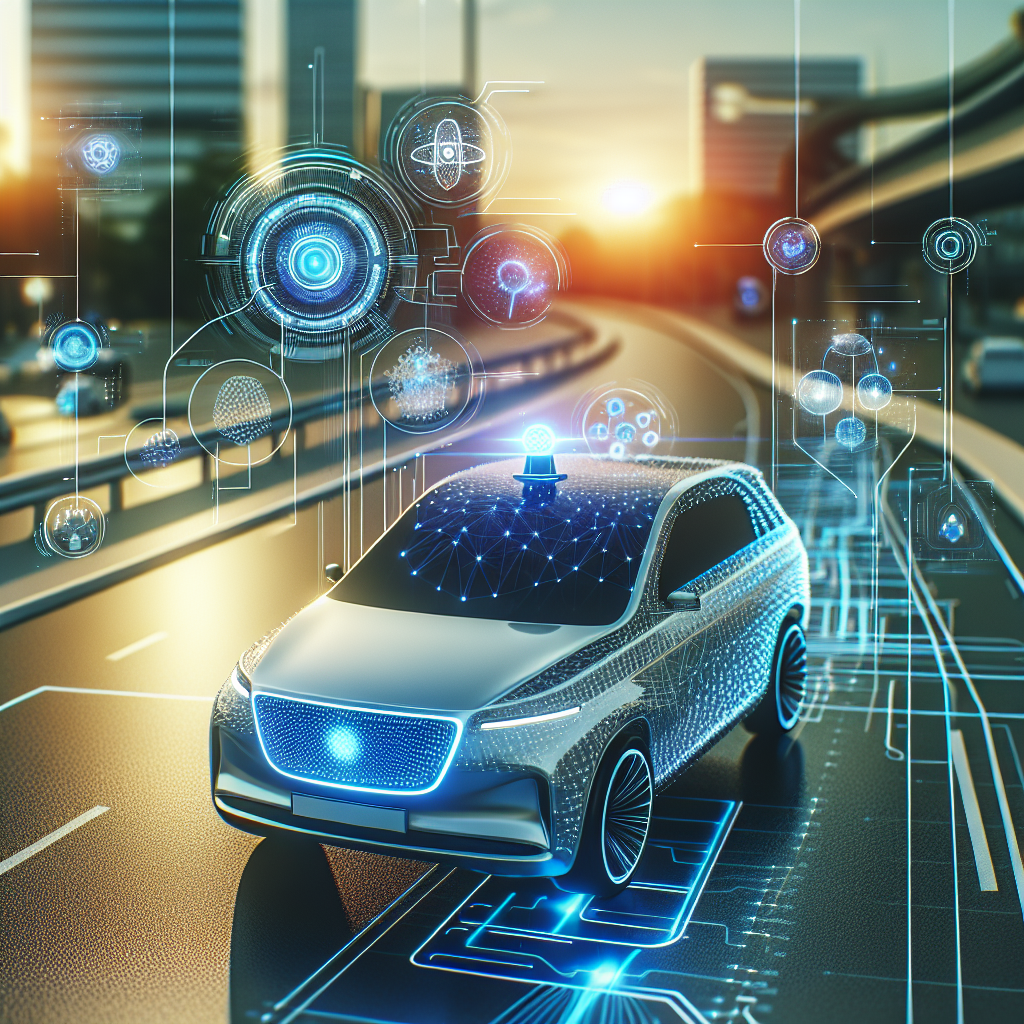As technology continues to advance, the automotive industry is embracing the use of artificial intelligence (AI) to develop autonomous vehicles. These AI-driven solutions are revolutionizing the way we think about transportation, offering improved safety, efficiency, and convenience for consumers. In this article, we will explore the role of AI in autonomous vehicles, the benefits of these solutions, and address common questions about this exciting technology.
AI-driven solutions in autonomous vehicles encompass a wide range of technologies, including machine learning, computer vision, and sensor fusion. These technologies work together to enable vehicles to navigate and make decisions without human intervention. Machine learning algorithms analyze data from sensors such as cameras, LiDAR, and radar to detect and classify objects in the vehicle’s environment. Computer vision systems interpret this data to create a real-time map of the vehicle’s surroundings, allowing it to identify obstacles, pedestrians, and other vehicles on the road. Sensor fusion combines data from multiple sensors to provide a comprehensive view of the vehicle’s environment, improving accuracy and reliability.
One of the key benefits of AI-driven solutions in autonomous vehicles is improved safety. By using AI to analyze data from sensors and make split-second decisions, autonomous vehicles can react faster and more accurately than human drivers. This can reduce the number of accidents caused by human error, such as distracted driving or impaired judgment. In addition, AI can help vehicles anticipate and respond to potential hazards, such as sudden lane changes or pedestrians crossing the street. By incorporating AI into autonomous vehicles, manufacturers can create vehicles that are safer and more reliable than traditional cars.
Another benefit of AI-driven solutions in autonomous vehicles is increased efficiency. By using AI to optimize routes, predict traffic patterns, and adjust speed and acceleration, autonomous vehicles can reduce fuel consumption and emissions. This can result in cost savings for consumers and a reduced environmental impact. In addition, AI can help vehicles communicate with each other and with infrastructure such as traffic signals and road signs, improving traffic flow and reducing congestion. By leveraging AI technology, autonomous vehicles can operate more smoothly and efficiently than human-driven cars.
In addition to safety and efficiency, AI-driven solutions in autonomous vehicles offer increased convenience for consumers. By allowing vehicles to operate autonomously, consumers can relax and focus on other tasks during their commute, such as reading, working, or socializing. Autonomous vehicles can also provide mobility solutions for elderly or disabled individuals who may have difficulty driving or accessing public transportation. By using AI to create self-driving cars, manufacturers can offer consumers a new level of convenience and accessibility in transportation.
Despite the many benefits of AI-driven solutions in autonomous vehicles, there are also challenges and concerns that need to be addressed. One common question is about the reliability of AI technology in complex and unpredictable environments. While AI algorithms can analyze vast amounts of data and make decisions quickly, they may struggle to adapt to unexpected situations or outliers. Manufacturers must continue to refine and improve AI algorithms to ensure that autonomous vehicles can operate safely in all conditions.
Another concern is the ethical implications of AI-driven solutions in autonomous vehicles. For example, in the event of an accident, how should an autonomous vehicle prioritize the safety of its occupants versus pedestrians or other drivers? Manufacturers and policymakers must consider these ethical dilemmas and develop guidelines and regulations to ensure that AI-driven vehicles prioritize safety for all road users.
Additionally, there are concerns about the cybersecurity of autonomous vehicles. As vehicles become more connected and reliant on AI technology, they may be vulnerable to cyberattacks that could compromise their safety and security. Manufacturers must implement robust cybersecurity measures to protect autonomous vehicles from hacking and unauthorized access.
In conclusion, AI-driven solutions in autonomous vehicles have the potential to revolutionize the automotive industry, offering improved safety, efficiency, and convenience for consumers. By leveraging AI technology, manufacturers can create vehicles that are smarter, safer, and more reliable than traditional cars. While there are challenges and concerns that need to be addressed, the future of autonomous vehicles looks promising as technology continues to advance.
FAQs:
1. How do autonomous vehicles use AI technology?
Autonomous vehicles use AI technology such as machine learning, computer vision, and sensor fusion to analyze data from sensors and make decisions about navigation and driving tasks. These AI algorithms enable vehicles to navigate and make split-second decisions without human intervention.
2. Are autonomous vehicles safe?
Autonomous vehicles have the potential to be safer than traditional cars, as they can react faster and more accurately to potential hazards. By using AI technology to analyze data from sensors and make decisions, autonomous vehicles can reduce the number of accidents caused by human error.
3. How do autonomous vehicles communicate with each other?
Autonomous vehicles can communicate with each other through vehicle-to-vehicle (V2V) communication technology, which allows them to share information about their location, speed, and trajectory. This communication enables vehicles to cooperate and coordinate their movements, improving safety and efficiency on the road.
4. What are the ethical implications of autonomous vehicles?
There are ethical implications to consider when it comes to autonomous vehicles, such as how they prioritize the safety of occupants versus pedestrians or other drivers in the event of an accident. Manufacturers and policymakers must address these ethical dilemmas and develop guidelines to ensure that autonomous vehicles prioritize safety for all road users.
5. How can autonomous vehicles be protected from cyberattacks?
To protect autonomous vehicles from cyberattacks, manufacturers must implement robust cybersecurity measures such as encryption, authentication, and intrusion detection systems. By securing the communication and data exchange within autonomous vehicles, manufacturers can reduce the risk of hacking and unauthorized access.

